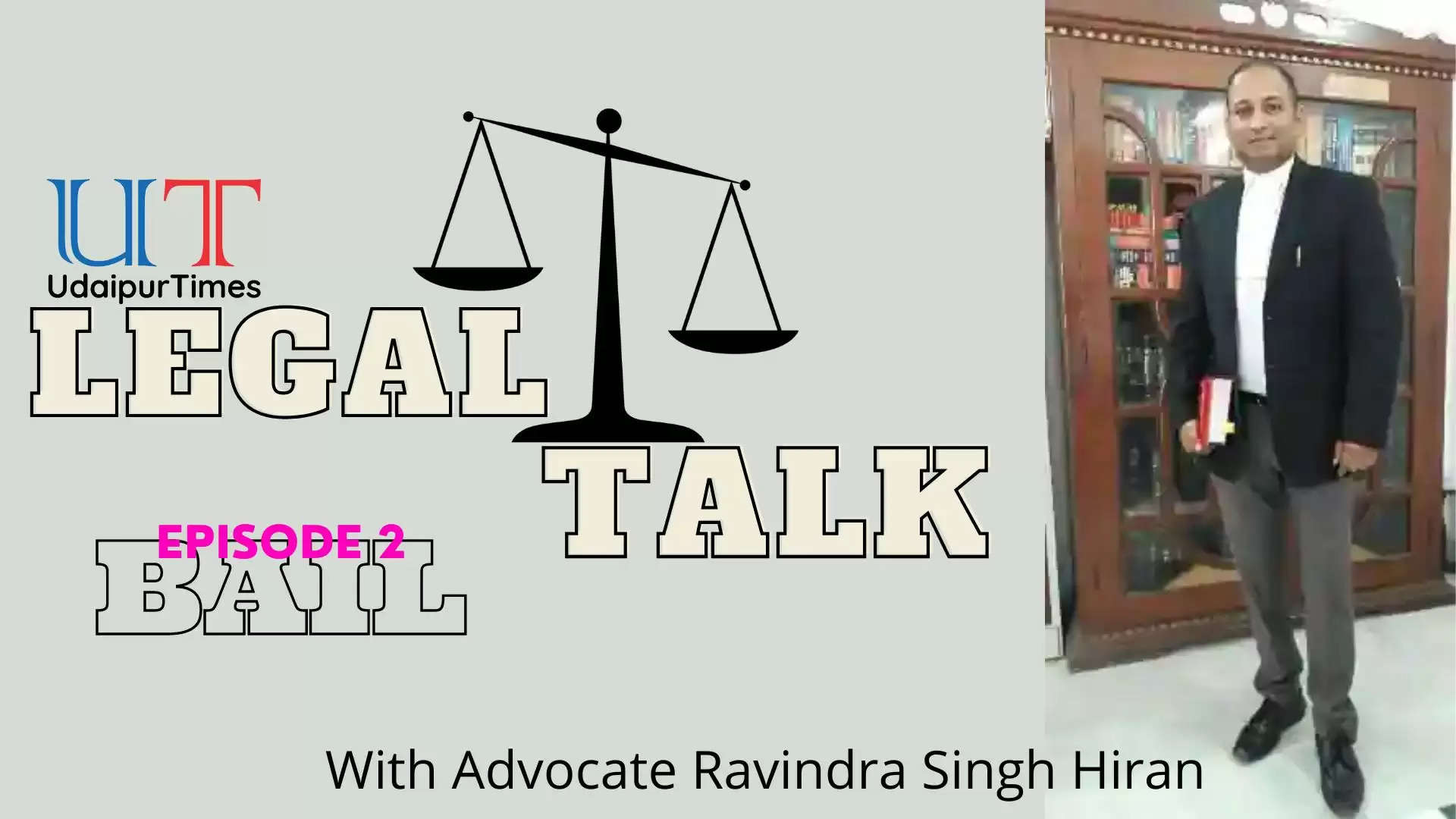UT Legal Talk Episode2: Explaining ‘Bail’ | Definitions, Forms and Procedures
As a part of the Community Initiative from UdaipurTimes, our team has taken the services of Advocate Ravindra Singh Hiran, to give our readers a general understanding of the Bail procedure.
Editing Credits: Heena Moiwala
In the first episode of Legal Talk Segment of Udaipur Times, Advocate Ravindra Singh Hiran has explained about the FIR, its significance, and the reasons why one should be familiar with the fundamentals before filing the FIR. The second Episode goes a step further, to explain the Bail process and how it actually works.
The 24 hour clause
Advocate Hiran explained that once the accused is arrested after the filing of a FIR, the Police needs to produce the accused in court within 24 hours of arrest. This is regulation. If the Police needs to investigate a matter further and needs custody of the accused, the Police can file a request for Police Custody with the Court – there is a provision that allows the Police to ask for remand. If the Magistrate finds in the interrogation in Court that no further Police interrogation is needed, the Court can order Judicial Custody.
Police Custody vs Judicial Custody
Further, Police Custody or remand cannot be for a period of more than 14 days. The Court is very diligent and strict when it comes to granting Police Custody, as it may result in torture, abuse or forced confessions. Hence Sec 167 of CrPC says mentions that the initial custody cannot be more than 24 hours. A Police Custody, after the Court order can be for a period of 14 days, after which the accused is transferred to Judicial Custody and sent to Central Jail, Adv Hiran added.
“The period of Judicial Custody depends upon the nature of crime”- Advocate Ravindra Singh Hiran
Provisions for Bail
Advocate Hiran explained that there are four sections of the CrPC that define Bail, viz. Sec 436, 437, 438 and 439.
Explaining further, Adv Hiran said that Bail under Sec 436 covers those offences where Bail can be given immediately and even the Police can grant Bail under this section. This section elaborates the offences for which Bail can be given under Section 436. When the Police does not grant Bail, the Court is approached and if the Court agrees that the offence is under those listed in Section 436, Bail is granted immediately.
Section 437 consists of non-bailable offences such as theft, assault, etc. When an application for Bail is presented under these offences, it is presented under Section 437.
Section 438 is another important section, which provides for Anticipatory Bail. At times, people might feel that there will be a FIR against them and being innocent, they might end up behind bars, even if for a short duration and face humiliation. The defendant approaches the Court with an application for Anticipatory Bail under Section 438. If the Court finds that the reasons are strong enough, Anticipatory Bail can be granted, with conditions that include participating in the investigation, lending support for the investigation when needed and restrictions of movement from one city to another.
All kinds of Bail under Section 436, 437 and 438 is for offences where the period of punishment is upto 7 years as defined in the CrPC. However, for offences where the period of punishment is defined for a period of more than 7 years, the provisions for Bail for such fall under Section 439. These include offences where the punishment can go up to life imprisonment. Giving an example, Advocate Hiran said that often we hear that Bail has been rejected. These instances are those where the application has been moved under Section 436, 437 and 438, but the nature of the offence demands that the application be moved under Section 439. It is mandatory that the initial application be moved under Section 437. This is rejected and then a new application is moved under Section 439. This is the legal procedure. Applications for Bail under Section 439 cannot be moved in the JM Courts or ACJM Courts. They have to be moved in the Court of Session or High Court.
Summarizing the above, people should understand that Section 436 CrPC is for Bailable offences, Section 437 is for non-bailable offences having punishment below 7 years, Section 438 CrPC is for Anticipatory Bail and Section 439 CrPC is for offences where the punishment if for above 7years.
Procedure after Bail is granted
Advocate Hiran said that the procedure after Bail is granted needs to be followed thoroughly and the Bail order needs to be taken from the Court. The conditions of Bail are mentioned in the order and details of Surety, Recognizance (Muchalka), restrictions are clearly mentioned.
For example, if the Muchalka is of Rs. 50,000 and the Bail is of Rs.25,000 each, what actually happen is that the Surety usually goes to the Court with anything which is worth Rs. 25,000. It is usually not cash, but even cash is acceptable. Movable and immovable property can also form the Muchalka. After this Surety has to fill the Form 45 and an Affidavit; it will be first verified and then one can go to the Court. In case the Surety disappears over the period of Bail, then the court has the full right to confiscate the property/cash.
These were the basic explanations of Bail for our readers to understand. Our next episode will cover Atrocities against Married Women (Domestic Violence).
To join us on Facebook Click Here and Subscribe to UdaipurTimes Broadcast channels on GoogleNews | Telegram | Signal



